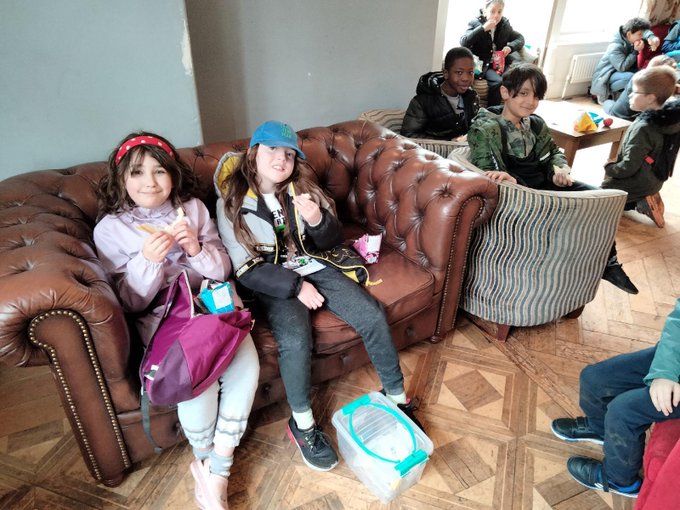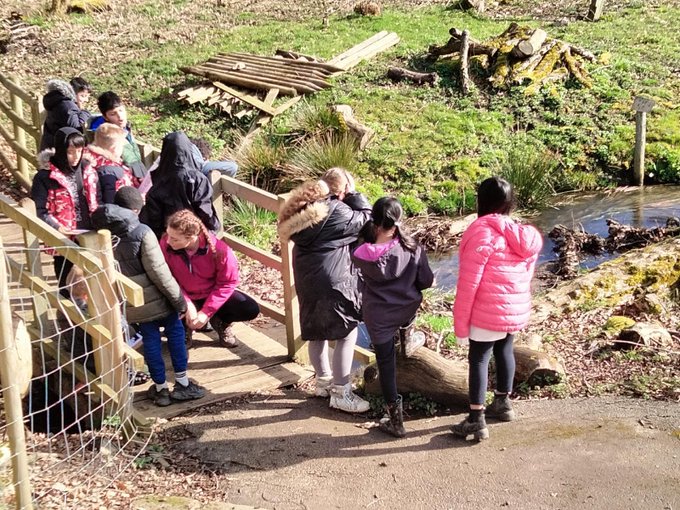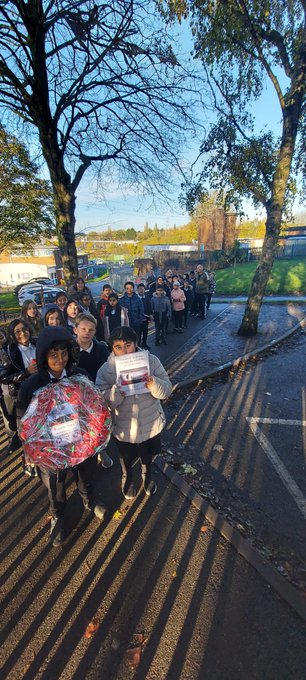Latest News
Keep up to date with all the latest news happening in our federation at the moment.
-
Whitehall Junior School has joined Cadmus!
Tue 22 Mar 2022A huge Cadmus welcome to Whitehall Junior School which has just joined our federation. We look forward to working together!
-
New Website Launched
Mon 09 Aug 2021Welcome to our brand new website! We have created the website to keep parents up to date with school news and notices, and to showcase some of the great things our pupils are achieving. The website is extremely easy to edit by all staff at the school, so check back soon for new updates!
-
Supporting Primary Education Over The Summer
Wed 04 Aug 2021All parents have experienced the educational disruption caused by the Covid-19 crisis. It’s been recognised by parents and education leaders alike that many pupils have suffered immense learning loss that may impact longer-term attainment if we don’t put in place catch-up measures.
A study of the effect of school disruption in England in 2001 as a result of the Foot and Mouth epidemic can offer us some insight as to the likely long term damage to children’s education.
Historic evidence shows that while the Foot and Mouth epidemic led to achievement fails the following year, most notably in maths, the negative effects gradually weakened over subsequent years. Sadly it also confirms that school attainment was reduced for at least 5 years after the crisis.
Over the spring and summer of 2001 the government put in place measures to contain the spread of Foot and Mouth, which included restricting the movement of people living in affected areas. This resulted in school absences rising significantly above average, in the affected rural communities.
Research between 2001 and 2006 suggests that educational disruption caused by the Foot and Mouth crisis persisted for a number of years after, reducing pupil attainment. Therefore given the scale of the current Covid-19 crisis and it’s impact on education, government policy action is now required in order to avoid permanent reduction in attainment for pupils.
Source: https://blogs.lse.ac.uk/politicsandpolicy/fmd-covid19/#Author
Studies On Pupil Attainment After The Pandemic
There have been recent studies carried out which measure the impact of partial school closures over the Covid-19 crisis; these measure it’s impact on pupil attainment over and after this period.
You can access these studies at https://educationendowmentfoundation.org.uk/eef-support-for-schools/covid-19-resources/best-evidence-on-impact-of-school-closures-on-the-attainment-gap/
The Juniper Education National Dataset Report is the largest report into the impact of the disruption caused by the pandemic on primary school children. It was released in February 2021 and shows that children in Year 1 have experienced the greatest drop in their learning. The report examines teacher assessment data from more than 6,000 primary schools representing 1.47 million pupils.
All Covid-19 impact assessment studies conducted thus far are showing us a consistent pattern in education – Covid affected pupils have made less academic progress compared with previous year groups, and there is a large attainment gap for disadvantaged pupils, which has grown over the pandemic.
Help Your Child Catch Up
Though the government is concerned about the loss of learning, 75% of school leaders are more concerned about mental health, and feel that staff and children need a proper break over the summer.
It has always been important to support your child’s education during the long summer holiday and indeed all year round, and never has it been more crucial than it is now. Having said that it’s important to do so in a balanced way that still allows your child a proper break over the holiday period.
Formal tutoring sessions or summer school programmes can be good options for parents, however there are other ways of encouraging and supporting your child over the summer that do not involve formal tutoring, and yet will still bolster their learning.
The human brain is like a muscle, the more regularly it is are exercised, the more developed it becomes. Continuing to engage a child’s brain over the summer (and any other times they are are not at school), will massively contribute to their ability to achieve.
Keep A Summer Diary
A summer diary can be used to record activities, express how they feel, talk about people they meet and anything new they’ve learned. A diary is a great keepsake of a fun summer, at the same time as building up writing skills and vocabulary.
Maintain Their Reading
Encourage your child to read daily while on holiday, this shouldn’t be seen as a chore or ‘school work’, it should be promoted a something enjoyable and interesting that should be a part of everyone’s life, even after formal education ends.
Aside from the education benefits, reading also helps a child to relax, especially before bedtime. It is well documented that screen light from devices tells the brain it’s daylight still, and not time to sleep. Screen time should end at least an hour before bed time and reading is a great way to fill this gap.
Find out which reading genres excite and interest your child by giving them varied reading materials, and consider non fiction books too.
Research highlights that reading just six books during the summer (one per week) may prevent a struggling child from regressing.
Play Games
Game playing helps to build reasoning skills, something that schools are keen to develop as they are a basis for assessment in Science, Technology, Engineering, the Arts and Maths study.
Puzzles and games are an easy and fun way to keep your child’s mind stimulated over the summer. Games such as Sudoku, Scrabble, Monopoly and more are incredibly useful for their education and you’re not likely to get much resistance to games.
Games are another great way to reduce screen time, and can help build social interaction skills too.
Utilise Your Family Holiday
It’s tempting to abandon all learning while on your family holiday on the reasonable basis that everyone needs a break, but learning can be seamlessly worked into your holiday without it being a chore or a nuisance.
Most towns, cities and rural areas offer attractions such as museums, animal sanctuaries and historical sites and these can make up an enjoyable part of a trip for the entire family. Even very young children can appreciate museums, and most museums cater their facilities to engage and interest young people too.
If you’re taking a trip abroad, in addition to visiting museums, other learning opportunities include converting currencies, or ordering food in a different language.
Try New Things
According to daily survey app Parent Ping, two thirds of parents are worried about their child’s self esteem.
The long six week summer holiday is an opportunity for children to stretch themselves and try new things, and by doing so bolster their confidence and self esteem.
Encourage your children to try things they have never experienced before. Ideas include gardening, crafts, cooking, volunteering and outdoor pursuits. Often new activities involve meeting new people, and this too will build confidence and establish vital social skills a child cannot develop in front of a screen.
Further Reading
Do you think children should have longer school days to help them catch up?
Mental health resources for children, parents, carers and school staff
A searchable list of UK museums
-
Should The Government Implement Longer School Days?
Fri 23 Jul 2021The government has still not ruled out lengthening the school day in England to help pupils catch up on lost learning over the pandemic.
£1.7 billion catch-up funding has been made available for those who have suffered the disruption of school and college closures.
A report by the Department of Education was commissioned earlier in the year to explore how extra time in school may benefit students as part of an education recovery plan, the results of this report and any decisions made from it, will be set out later in the year.
Ruth Marvel, Chief Executive of the DofE, said: “The package of tutoring and teacher training will play an important role in supporting young people’s learning and tackling the growing attainment gap between advantaged and disadvantaged pupils, however, education recovery is about more than just academics.
In order to learn well, young people need to feel well, feel energised and feel confident – and youth wellbeing has taken a battering during the pandemic. That’s why extracurricular activities and youth programmes – from sport and creativity to outdoor learning and social action – must also be an integral part of the recovery package.”
The potential extension to the school day is expected to be 30 minutes, however this isn’t the only measure under consideration.
Ministers are also discussing financial incentives for teachers to work in more challenging areas and schools, allowing some pupils to retake the year in situations of extreme learning loss, and offering summer well-being programmes for all ages.
What Do School Leaders Think?
The majority of school leaders do not support an extension to school hours, believing that the move could be counter-productive.
Geoff Barton, the general secretary of the Association of School and College Leaders said; “Many schools already run after-school activities and holiday clubs but this is totally different from a blanket requirement to grind out more hours of learning from tired children with the likelihood of diminishing returns.”
More than 70% of school leaders believe that individual and small group tutoring for struggling pupils, run by the schools themselves, should be the focus of education recovery rather than forcing an entire school to run longer hours.
Paul Whiteman, general secretary of the NAHT, a trade trade union and professional association that represents more than 45,000 members, has asked the government to fund more flexible solutions that allow schools to “to get on with the job in the way they know works best”.
Geoff Barton, the general secretary of the Association of School and College Leaders, said: “We know that quality of teaching is more important than quantity.
The Pros of Longer School Days
More Time For Teaching
This can be see as either a pro or a con, as one could say for example that more academic teaching time = less time for other valuable activities. However lets explore it as a pro for now.
Over the last century mankind has amassed a staggering amount of knowledge, especially in STEM where knowledge is advancing at speed and there are lots of job opportunities.
Giving teachers more time allows them to cover a greater range of topics and explore existing subjects in more detail, and this can offer our children an advantage in a global market.
Modernising Our School System
One reason for our current school day structure and indeed holidays, has been linked to agriculture – it has been speculated that children may have been needed to help with harvesting produce over the summer and that agriculture may have even influenced our choice of hours that the school day runs over.
The vast majority of children no longer have families that work in agriculture and modern households have changed in many other ways too. To move forward as a nation, it makes sense to at least examine the reasons for our school calendar and/or day.
By opening up the conversation and being open to change, we are ensuring school schedules are in touch with modern needs and not simply habits hanging over from the past for antiquated reasons.
More Convenient For Parents
Children leaving school even 30 minutes later each day will offer many parents notable financial benefits.
The working hours of the average full time job is rarely confined to school hours, forcing parents to pay for after school care. 30 minutes of daily childcare cost reduction spread over an entire year may amount to significant savings.
Aligning school hours closer to working hours could be viewed as a progressive way of helping working families.
The Cons of Longer School Days
Unproven Benefits For Children
While some studies have shown a correlation between longer school days and academic achievement, other studies contradict this and the results are highly dependant on other factors such as quality of teaching, student ability and more. There is no real evidence that increasing tuition time will make a difference.
Some nations (USA for instance) already spend more time in the classroom compared to other nations, and yet many of the other shorter school day nations, achieve more academically than the USA.
Increased Costs
The economic cost of keeping children in school for longer is huge. The government would be required to fund an increase in teacher salaries (plus other ancillary staff that support schools).
Some parents may prefer this, as those who are working full time are paying for after school child care themselves, and this moves more of the financial burden onto government instead.
However those parents that do not use after school child care at all (and indeed people who do not have children), may not appreciate their tax money being used to fund longer school days that they may deem as unnecessary and wasted spending.
It Limits Time For Other Activities
While academics are important for our children, there are many other activities they can participate in, that should also form part of their learning.
Children should be given the time to explore a broad range of activities such as dance, sports, music and other art forms, as these extra curricular skills will enrich their lives. Indeed some children may even excel in these fields sufficient to form a future career in a non academic role.
Taking a further 30 minutes of each child’s day to expend on academic learning only, may not be in their best interests and may not lead to a successful future.
The Extra Time May Be Ineffective
There is a finite amount of energy and focus anyone has for active learning. Once we reach this limit we burn out and every moment of teaching time after that is not effective.
It is proven that during the afternoon in a typical school, primary aged children will experience mental fatigue and failing attention, this reduces their ability to retain any of the information they’re being taught. Lengthening the day by 30 minutes isn’t necessarily going to result in them learning more.
In addition, failing attention in the afternoon often leads to an increase in low-level classroom disruption from some students, such as excessive movement, talking and general fidgeting. This disrupts the learning of the entire class.
Teacher Burnout May Reduce Teaching Quality
We’ve talked about how children burn out during the school day and how each child has a finite amount of energy; the same applies to adults (teachers).
UK teachers already experience one of the highest workloads in the world, do we really feel that allocating them a greater workload is going to result in higher teaching standards and greater student attainment?
We already know that the standard of teaching provided, is far more important than how many hours a child is taught for. It will always be quality of quantity.
In Conclusion
One of the biggest issues facing the government in terms of deciding what is best for the future of our children, is a lack of studies within the last 50 years on the impact of longer school days, and this goes for all countries.
Regarding the most recent studies we do have access to – are the results of Germany, Indonesia and Argentina in the 1970s really a comparable model to the UK in 2021?
Source: https://www.tes.com/news/coronavirus-covid-catch-up-longer-school-days-impact-teachers-pupils-research
Further Reading
The Government Education Recovery Plan News Update
The School Day and Year Briefing Paper March 2021 (House of Commons Library)
-
Teaching Diversity in Primary Schools
Wed 21 Jul 2021Before we talk about teaching diversity in primary schools, lets first establish what diversity actually is, as it’s likely that many people will think about cultural diversity and race when planning to educate on the topic.
Cultural diversity is the existence of a variety of cultural or ethnic groups within a society, but diversity is more than this alone.
The full gamut of diversity in society covers people from a range of different social and ethnic backgrounds, of different genders, sexual orientations, physical and mental ability and more. Diversity is what makes us all unique and can also include our backgrounds, life experiences and belief systems.
Diversity acceptance is the concept of accepting and promoting people’s differences, with the goal of raising awareness and ensuring that all individuals are treated equally and fairly.
When students are taught to respect all forms of diversity, they gain an understanding that will help their relationships, and lead to more positive and inclusive decisions throughout their lives.
The goal in schools should be to create tolerant, accepting and inclusive classrooms, where everyone is safe from prejudice. Children should be taught that differences should be respected and recognised, and diversity itself valued as a strength.
Not all children are exposed to diversity before starting school and many parents don’t teach this topic at home. Intolerant attitudes can develop at a very young age and typically start at home due to the absence of exposure and education.
Teachers have a vital role to play in combating discrimination and encouraging tolerance, by teaching children about diversity as early as possible.
What Diversity Types Do We Need To Teach?
There are many ways people can differ from each other, some are visible from the outside and others are not. Diversity types have been sectioned into four different categories which are; Internal Diversity, External Diversity, Organisational Diversity and World View Diversity.
Internal Diversity
This category of diversity specifies things that people are born into or as – things that are not chosen by them and are impossible for them to change. Examples include race, ethnicity, age, sexual orientation, cultural identity, gender identity, physical ability and mental ability.External Diversity
A diversity type that describes things which are related to the characteristics and preferences of the person, but aren’t characteristics that they were genetically born with. These characteristics can be heavily influenced by the people around them, and indeed sometimes those people forcefully exert their influence.Examples of external diversity include personal interests, education, styling of appearance, religious beliefs, location, socio-economic status and life experiences.
Organisational Diversity
Also termed functional diversity, this relates to the differences between individuals assigned to them by an organisation, typically a workplace. These include job function, place of work, management status, union affiliation and payment type.World View Diversity
There are many factors that can influence our world view, and these can change and evolve over our life time, especially as they are influenced by our internal, external and organisational diversity characteristics.Examples of world view diversity are political beliefs, moral compass and epistemology (the rationalisation of how we reach and define our beliefs).
Why Is School Diversity Important?
School diversity teaching is important for students and staff members alike. Students are taught during their formative years to respect and appreciate diversity, and staff members too can benefit from a tolerant and inclusive work place.
A diverse workforce and school community offers an establishment with varied perspectives from differing backgrounds and experiences. This wealth of knowledge and experience is invaluable, and appreciating and encouraging diversity amid pupils and staff can result in better problem solving.
A diverse school will reach a wider audience within the community at large, and with a commitment to equal opportunities for all, the reputation of your school will flourish.
With greater diversity and a commitment to teaching and encouraging diversity within your school, you will attract more job applicants for key roles, offering you more applicant choice and a more skilled work force.
Ideas For Supporting Diversity In The Classroom
Examine your resources and materials – what stories do you tell and who are the voices? Teaching materials have been limited to the narratives of white Western middle class voices, but now there is so much more out there – check out our further reading below with links to diversity books.
Don’t ignore discrimination – Shut down discrimination whenever you hear it; respond to it, take it seriously and take action, which may also include informing parents.
Use the right language – language should promote diversity and avoid stereotypes, such as avoiding phrases like ‘boys will be boys’ for example.
Encourage mixing and inclusion – step in where you see divisions forming amid students and their peers in terms of racial, economic, ability or any other lines.
Avoiding grouping children by gender – alternative ways to create groups is by using birthdays, pet preferences and so on.
Explore existing attitudes – people often find the differences between animals exciting and interesting, but the differences between humans can create fear and anxiety. Explore their existing thoughts and feelings.
Examine your curriculum – for example you could teach about British Imperialism and consider using teaching resources from The Black Curriculum. The Black Curriculum is a social enterprise founded in 2019 to address the lack of Black British history in the UK Curriculum.
Use role models – share videos and stories of diverse high-profile positive role models. These role models may also share their personal experiences with discrimination, which is important for students to hear.
LGBTQ – Teach children about gendered language and discuss homophobia and transphobia. Speak out against the use of anti-gay slurs and support anyone who chooses to come out.
Encourage different perspectives – task children to solve problems by coming up with different solutions to the same problem. This teaches them that there is no correct way to do anything.
Further Reading
Exclusions for racism in primary schools in England up more than 40%
Diverse Voices – 80 Children’s Books that Celebrate Cultural Difference
How Inclusive Is Your School Library?
BBC Video Resource; KS2 Children Describe Their Experiences With Diversity
Diversity Activities On Pinterest
-
Plastic Free July For Schools
Mon 19 Jul 2021Plastic free July is a month long challenge that started in Australia in 2011 but now has millions of participants in over 200 countries, and an estimated 326 million people joined in last year.
The Plastic Free July website (www.plasticfreejuly.org) offer a range of assets and promotional tools that you can use in school, work, or share in your community to spread the word and take part in the challenge.
Even if you feel it’s too late to get on board this year, why not plan ahead for 2022 and get your school fully involved in the challenge next year.
Or you could even create your own school challenge, such as this Plastic Free Christmas idea from the organisers – www.plasticfreejuly.org/blog/ideas-for-a-plastic-free-festive-season/
Why Is Plastic Such An Issue?
Plastic does not biodegrade and remains on the earth. Shockingly despite every UK resident having access to a recycling bin, we recycle less than 10% of our plastic, the rest is sent to China and placed in landfill, however China no longer want to take our plastic. The planet is out of space for any more landfill, and we simply cannot continue to dump our plastic here or in any other country.
We’re in the midst of a major environmental crisis, as the sheer amount of plastic on the planet is clogging up animals stomachs and polluting our landscapes. If we continue at our current pace, by 2050 there could be more plastic by weight than fish in the sea.
The UK produces more plastic waste per person than almost any other country and it’s not just China that is left to deal with our excess; Greenpeace investigators found British plastic being dumped in Turkey also, burned on roadsides in the open air and near waterways, causing serious health problems in people nearby.
Large plastics such as bottles are immediately obvious as ‘plastic’ but there are hidden plastics that many of us are unaware of that are just as problematic; such as tampons – which look like cotton but are made up of 90% plastic in tiny particles.
Tiny plastic particles are called microplastic and even clothes made from artificial materials shed microplastic fibres when washed. Other types of less noticeable plastics are microbeads, which are added to products such as cosmetics and toothpaste. Microplastics are impossible to filter from waste water, they end up in our oceans.
Plastic Free July aims to challenge and educate us on how plastic is negatively impacting all of our futures and what better place to start with that education but in schools?
Plastic Free July Ideas For Schools
The Plastic Free July website has a wealth of materials available for free to use in your school and community to promote Plastic Free July. These include:
Plastic Free July Posters – They offer a general poster as well as many others, such as those that encourage people to bring their own reusable bags, coffee cups and containers. They also offer a fantastic customisable poster that can be personalised specifically for your school.
Plastic Free Videos For Schools – You can inspire your children by sharing videos from challenge participants, and Plastic Free July also offer educational documentaries – your school can help to inform and educate future generations.
This 50 minute video called Waste Free Families is one example, and you can view more videos on the YouTube Channel For Plastic Free July.
Plastic Free Futures For Schools – you can use the challenge to encourage your school to become plastic free over the longer term. Read how Liz inspires her school to make long term changes: https://www.plasticfreejuly.org/what-others-do/liz-takes-the-plastic-free-july-challenge-school-wide/
This included measures such as getting the school canteen to change plastic cutlery for bamboo, plastic straws for paper and stop selling plastic wrapped ice lollies.
Get Involved In Plastic Free Events – You can find plastic free events for your school to get involved in by using the search tool on the challenge website at www.plasticfreejuly.org/get-involved/find-events-near-you/ – if you can’t find an nearby event, why not create one and add it to their event map!?
5 Ways To Reduce Your Individual Plastic Use
1. Get rid of the plastic in your period – Around 2.5 million tampons, 1.4 million pads and 700,000 panty liners are flushed every single day in the UK.
Most women are ware that tampons can come wrapped in plastic, or with plastic applicators but many are unaware that the actual tampons, and pads, are made of plastic too – most pads and tampons contain 90% plastic (micro plastic).
To reduce your impact plastic free period options include tampons and pads made from biodegradable, chemical-free cotton, menstrual cups and reusable, fluid-absorbing pants.2. Grow your own food – Though many big brand supermarkets are working towards reducing plastic, they’re making slow progress and the vast majority still package their fruit and veg in plastic packaging. You can cut out the middle man (and the packaging) by growing your own; it’s easier than you think, and does not need much space. 80% of the UK has access to some sort of outdoor growing space.
3. Shop at plastic free stores – Zero waste stores tend to be small local businesses that stock produce in bulk and allow you to fill your own containers. Using the same container hundreds of times instead of throwing away a piece of plastic every time you buy an item, has a huge impact on plastic waste. Sadly there aren’t many plastic free stores available currently but they are growing in number. Visit our resources section below to find your nearest zero waste store.
4. Your cardboard coffee cup is still plastic – Though largely made from cardboard, disposable coffee cups are lined with plastic polyethylene to make them waterproof. This means they cannot be recycled at standard recycling plants, and instead must be taken to specialist facilities – there are only three of these UK and thus as you surely suspect, most of them do not get recycled at all. Many coffee shops offer a re-suable cup scheme, so use it!
5. Ditch the cling film – Cling film is not accepted at most recycling centres but there are plenty of alternatives such as silicone lids and beeswax wraps for sandwiches.
Your school can sign up to the Plastic Free July challenge at www.plasticfreejuly.org/take-the-challenge/
Further Reading:
Plastic Free July Ideas
50 Easy Ideas for Plastic Free July
Zero Waste Stores Around The UK -
Why A Federation Is Better Than An Academy
Mon 19 Jul 2021A federation is a structure of governance where a group of schools share a single governing body. Schools within the federation remain under the jurisdiction of the local authority (LA) but all share a single governing body.
At Cadmus we call our federation a ‘family of schools’, because while each school retains it’s own name, ethos budget and uniform, we operate as a supportive family network that shares resources, facilities, staff and best practice.
The question for many schools however is; why not join an academy rather than a federation?
While joining an academy is typically proven to raise standards within a school (not guaranteed though), there are risks associated with joining an academy that are not associated with joining a federation. A federation can increase performance minus the risk and with greater autonomy for each member school.
You Are Not Locked Into A Federation
In a meeting with the academies minister Lord Nash, school governor Ian Courtney said that “A federation can be “unpicked” if unsuccessful. By contrast, it seems almost impossible to reverse the decision to become an academy.”
Source: www.theguardian.com/education/2014/mar/04/schools-federations-versus-academies-government
Though there is no lock in to a federation compared to joining an academy, joining a federation should still be viewed as a long term commitment rather than a quick fix.
A federation will put in place strategies for development of a school, that require medium to long term planning and implementation, and these should be given time to take effect and impact on results.
However the 2014 Federation Regulations do allow individual schools to leave a federation making joining a federation a low risk decision – the same cannot be said of joining an academy, which is not as easy to leave.
What If An Academy Fails And You Want To Leave?
Government stance on academies that fail to meet the standards is such;- “If an academy is failing to meet the required standards, the current system allows the department to take swift action, including transferring the academy to a more suitable trust where necessary. But we don’t believe transferring a school back into the control of a local authority is the best way to bring about improvement.”
Source: https://dfemedia.blog.gov.uk/2021/04/28/what-is-an-academy-and-what-are-the-benefits/
This confirms that leaving an academy is no easy feat and it is the aim of the government to keep a school permanently within the academy system once it has joined. Moving back to the local authority does not appear to be an option.
Academies Do Not Offer Better Results Than A Federation
Educational performance analysis service School Dash created a sample group of 792 schools that joined an academy in 2010 and 2011 and studied these schools again four years later to decipher what measurable improvements in educational standards had been achieved if any.
These academy run schools were compared with similar schools that remained under the local authority (but were not Federation run schools).
In the Academy schools studied, those that were already rated good or outstanding by Ofsted when they joined the academy, achieved 68.1 per cent of pupils gaining five or more A* to C GCSEs, including English and maths, in 2015. That is compared to 66.1 per cent in the similar local authority schools. Meaning that for these already well performing schools, joining an academy only improved results by 2% compared to not locking into an academy.
It’s clear that academies offer only small improvement for pupils who are already attaining well prior to their schools joining an academy.
For students who were had medium attainment prior to their school joining an academy the improvement was slightly better though still underwhelming; 60.5 per cent of academy pupils achieved the benchmark, compared to 57.0 per cent in equivalent local authority schools. This is still only an improvement of 3.5%.
With only marginal differences between local authority school results and schools operating under an academy, it’s not difficult to conclude that schools managed by a federation can easily perform as well as academy schools if not better – and without locking into an academy system that is near impossible to leave.
Academies Do Not Offer Guaranteed Results
Though these figures suggest that academies do offer marginal improvement for most pupils, joining an academy (bearing in mind they are difficult to leave) is no guarantee that all schools will achieve even these modest improvements. Some do not improve at all.
In 2016 Ofsted chief Sir Michael Wilshaw criticised seven sizeable academy chains for failing to improve the results of too many pupils in their schools, while paying board members large salaries. – Source: https://www.bbc.co.uk/news/education-13274090
In 2018 The Guardian report on “The great academy schools scandal”, saying “They were hailed as education’s great leap forward. But across England, the trusts that run them are failing” – Source: https://www.theguardian.com/education/2018/jul/22/academy-schools-scandal-failing-trusts
And just last month England’s biggest multi-academy trust is set to hand a struggling Leeds school to another chain, ending a seven-year effort to turn around its fortunes. – Source: https://schoolsweek.co.uk/englands-largest-academy-trust-gives-up-struggling-school/
Academies Offer No Greater Funding
Academies are independent, state-funded schools, which receive their funding directly from central government, rather than through a local authority. When academies first launched the deal was sweetened with extra funding, however any extra funding attached to academies has now essentially disappeared.
The Benefits of Joining Cadmus Family Of Schools Federation
As well as enjoying improved results schools, your school will be able to work together with other schools through a single governing body and share resources, staff expertise and best practice.
As a member school you will be able to retain your own name, identity reference number and budget, however have the opportunity to pool staff, facilities and budgets with other schools.
Becoming part of a federation offers children greater social experiences, reduces isolation and widen opportunities for staff professional development – all delivered at greater value for money.
Staff who join a federation do not have to contend with contract changes when they join; all staff are employed on the same conditions of service as they currently are, and by the same employer.



















